ECDIS Presentation Library 4.0 and PSC Concentrated Inspection Campaign (CIC) on SAFETY OF NAVIGATION

The Maritime Authorities of the Tokyo and the Paris Memoranda of Understanding (MoU) on Port State Control will launch a joint Concentrated Inspection Campaign (CIC) on SAFETY OF NAVIGATION. The aim of the CIC is to check compliance with the applicable requirements of the SOLAS Convention, the overall status of the vessel’s navigation safety, and the competency of crew involved in navigation operations.
This inspection campaign will be held for three months, commencing from 1 September 2017 and ending 30 November 2017 . A ship will only be subject to one inspection under this CIC during the period of the campaign.
Port State Control Officers (PSCOs) will use a list of 12 questions to assure that navigation equipment carried onboard complies with the relevant statutory certificates, the master and navigation officers are qualified and familiar with operation of bridge equipment, especially ECDIS, and that navigation equipment is properly maintained and functioning.
This campaign is also related to standards updates that have been carried by IHO with further implementation by ship owners and ECDIS manufacturers.
One of the good tools for PSC visit preparation may be the ECDIS Familiarisation Recommendations by the Nautical Institute provided in the form of check-list.
During the last years ECDIS has been more commonly used on SOLAS vessels and with the ECDIS Carriage requirement a majority of vessels will be equipped with ECDIS by the end of this decade. The development of ECDIS is an ongoing process based on user needs, technology achievements and need for improvement related to safety of navigation. The need to improve previously adopted ECDIS Standard was also recognized by the IMO «in order to ensure the operational reliability of such equipment and taking into account the technological progress and experience gained» and resulted in a revised performance standard for ECDIS MSC.232(82) adopted in December 2006. In the same way the related IEC test standards, as well as the IHO standards used for production and presentation of Electronic Navigation Charts (ENC) have been revised periodically.
In Oct 2011 the IHO issued the ECDIS Data Presentation and Performance Checks , which included two fictitious ENC cells intended to assist mariners identifying if their ECDIS was using the latest IHO S-52 Presentation Library, edition 3.4. The dataset also highlighted if there were any known ENC display anomalies present in the system. Mariners were asked to run a series of quick tests using the check datasets within their ECDIS to ascertain if they were experiencing display issues. If the system was found to be running an old IHO Presentation Library or had a more serious display anomaly Mariners were advised to contact their ECDIS manufacturer or an appropriate equipment maintenance company to obtain software patches and investigate further to resolve the issues. Results of the tests were to be sent to the IHO for analysis and for use in revising IHO standards.
The IHO ECDIS Data Presentation and Performance Checklist were not intended for, and are not suitable to be used as a Port State Inspection / Carriage compliance test for ECDIS.
To address the display anomalies and improve the ECDIS user experience the IHO issued S-52 Presentation Library edition 4.0 in September 2014.
The IHO has coordinated with the IEC to align the issue dates of S-52 and IEC 61174 “ECDIS Operational and performance requirements, methods of testing and required test results” publications. This resulted in a new edition (4.0) of IEC 61174 being published in Aug 2015. These standard updates affect all new ECDIS systems and new installations from Aug 19 th 2015. Current ECDIS users have until Aug 31 st 2017 to update their systems to comply with the ECDIS software updating guidance in MSC.1.Circ.1503 “ECDIS – GUIDANCE FOR GOOD PRACTICE” .
Changes to the IHO S-52 Presentation Library introduced in edition 4.0 will invalidate the tests contained in IHO ECDIS Data Presentation and Performance Checks which were specifically designed and developed for ECDIS using the IHO S-52 Presentation Library edition 3.4 or earlier.
IEC 61174 ed 4.0 address the following main problems:
- Consistent use of symbols and abbreviations
- Alarm categorization
- Alarm visualization
- Reducing a number of audible alerts
- ECDIS default control settings Route exchange format «RTZ»
Set of new IHO standards address the following main areas:
- New design of Chart object info functionality (Pick report) makes access to ENC chart information easier and understandable for user
- Reorganization of alert management resulting in less alarms being generated by ENC objects
- Crossing navigational hazards (isolated dangers and aids to navigation) as well as areas with special conditions (TSS, anchorage areas, etc.) will generate only visible alarms now
- Safety contours continue to create audible and visible alarms
- Standardized way of making ENC update status report will allow mariners and Port State Control inspectors to confirm that the ENCs installed in an ECDIS are up-to-date
- ECDIS viewing groups extension based on Mariner feedback for detailed control of ENC features
- Chart management and ENC status reports
- ENC test data sets
- Other modifications - new symbols, names of fairways and anchorage areas, highlighting ENC updates, date dependent objects, new chart display layers, and some more

ECDIS and the IHO Presentation Library Edition Number
All ECDIS must have a function to display the edition number of the IHO Presentation Library that is in use within the ECDIS. The new IHO ECDIS Presentation Library edition 4.0 clause 19.1 states: ‘The edition number of the PresLib installed must be available to the Mariner on request’. This requirement is tested for in the standard IEC 61174 edition 4 clause 5.5.1 Presentation library (S 52/Annex A, Part I/19.1) ‘The edition number of the PresLib installed shall be available to the Mariner on request’.
All Mariners must familiarise themselves with the function in their ECDIS that will display the edition number of the IHO Presentation Library as this varies across ECDIS manufactures. This function will be required when Port State Control officers want evidence that the ECDIS is up-to-date to the latest IHO standards. MSC.1.Circ.1503: ‘Additionally, ECDIS software should be kept up to date such that it is capable of displaying up-to-date electronic charts correctly according to the latest version of IHO's chart content and display standards’.
ECDIS Chart 1 and IHO Presentation Library edition 4.0 checks
This is the IHO recommended method for checking that the ECDIS system can display symbols correctly. There is no intention for the IHO to issue a check data set for IHO Presentation 4.0.
ECDIS users can check that their systems are capable of displaying the new symbols introduced in the IHO S-52 Presentation Library edition 4.0 by opening the ECDIS Chart 1 datasets. ECDIS Chart 1 which includes a legend of symbols used in ENC’s, should be installed on all type approved ECDIS.
Any anomalies in the display, shall be reported to the ECDIS provider and the IHO at [email protected].
More details can be found at www.iho.int
Viewing ECDIS Chart 1, “Information about chart display (A, B)” within the ECDIS will only display the new symbols if the IHO Presentation Library edition 4.0 is installed.
( 1 ) The beacon and buoy features below (approx. position is 15°07.0’N 005°06.5’W) display the date dependent magenta ‘d’ symbol when the ECDIS date range is set between 01.04.2014 and 27.08.2014.
( 2 ) New indication highlight symbology for objects that pose a danger to the vessel.
( 3 ) Automatic update symbology for identifying where changes to the ENCs have occurred.
It will not be possible to view the new symbols, if the ECDIS software has not been updated to use the S-52 Presentation Library Edition 4.0.

Referring to mentioned above deck officers must know how to check their actual Presentation Library. Usually you can easily find it via so called “PIC report” enquiring ENC cell information. Let’s see how it’s done by example of two different systems.
IHO Presentation Library check on Transas Navi-Sailor 4000
This can be done in three steps:
( 1 ) Click “I” button on the console
( 2 ) TrackBall RightClick anywhere on the chart
( 3 ) Click “General” in the chart information field

As you can see, this ECDIS still runs with the old Presentation Library ed 3.4 from 2008.
Another tricky moment is that not every ECDIS clearly shows ECDIS chart 1 as it is. ECDIS chart 1 is split in several cells with names starting from “AA”. So, if one clicks “Task List” -> “Charts” he will be able to see charts “aa5cab1” and “aa5cab2”, which are supposed to be checked as per IHO recommendations. As mentioned above, it is not possible to view the new symbols, as the ECDIS software has not been updated to use the S-52 Presentation Library Edition 4.0

IHO Presentation Library check on Simrad Maris 900
This can also be done in three steps:
( 1 ) TrackBall RightClick anywhere on the chart
( 2 ) Click “Properties” on the context menu
( 3 ) Click “More” in the chart information field

This ECDIS already runs with the new Presentation Library ed 4.0 from 2014 . And if you access the Charts Management utility, you will be able to find ECDIS Chart 1 and the same notation for its cells. Checking cells “aa5cab1” and “aa5cab2” will give an exact match with example given by IHO.

I do hope that this information helped to clarify some concerns regarding ECDIS Presentation Library and corresponding checks and I wish you fair winds, following seas and no deficiencies!
Learn more about ECDIS operation and safety settings with our ECDIS Awareness course .
Grow with us!
Register with Learnmarine today and become a part of a professional maritime society
Wish you calm seas and best regards!
For the latest news and updates you may also follow us on Facebook or Instagram .
Learnmarine is a provider of custom-made online and in-class training as well as competency assessment for the maritime industry.
ALEX ECDIS Library & Training is the good refreshing memory. BRGDS
Leave a comment...

Academia.edu no longer supports Internet Explorer.
To browse Academia.edu and the wider internet faster and more securely, please take a few seconds to upgrade your browser .
Enter the email address you signed up with and we'll email you a reset link.
- We're Hiring!
- Help Center

Checking the IHO S-52 Presentation Library edition 4.0 in ECDIS Background -IHO ECDIS Data Presentation and Performance Check

Related Papers
Zakirul Bhuiyan
Abstract: For the optimum situational awareness, navigators must recognise the level of display for objects presented when using Electronic Chart Display and Information System (ECDIS). The appearance and content of data displayed may be changed by the different settings as the display is generated in line with IHO Presentation Library (S-52) specifications. Improper management of the system may result in the anti-grounding alarms and other indications failing to activate as required for the safe conduct of the navigation. Navigators must exercise extreme caution when using the scale or zoom facility of the electronic charts. It is possible to zoom-in to a scale larger than that used in the compilation of the data which could create a false impression about the reliability of the charted information. Consequently, it could give a false impression of safe waters around the vessel where some dangers may not be shown due to the limitations imposed by original chart scale. Appropriate safety settings are of paramount importance for ECDIS display. Failings in appropriate settings have recently resulted a few grounding incidents (e.g. CSL Thames and LT Cortesia). The values for the safety depth and safety contour must be understood and entered to achieve a sensible and considered meaning. The navigators must remember that the display of underwater obstructions or isolated danger symbols can change according to the settings of this safety contour which also marks the division between " safe " and " unsafe " water. Additionally, the shallow contour could be utilised to indicate the gradient of the seabed (adjacent to a channel) and the deep contour to indicate the depth of water in which own ship may experience squat and interaction. This paper recognises the limitations of ECDIS display, the significance of appropriate safety settings as well as the alarm management.
Gabriel Materiales
Dmytro Stryzhkov
The International Hydrographic Review
Tyzack Laura , Panagiotis Gkionis
The International Centre for ENCs (IC-ENC) was set up in 2002 with a remit to harmonise the production and distribution of high quality ENCs. This Note provides an insight into IC-ENC, its validation processes, and the new ENC Validation Training Course.
Ian Russell
Chapter V Regulation 9 of the SOLAS Convention, annexed for reference, requires contracting governments to provide hydrographic services. Many signatories cannot provide these unaided. This is despite the fact that new cruise ship itineraries and trade routes are being established in their waters for increasingly larger and deeper draught vessels. This article reviews a number of chart related casualties. These demonstrate that no chart, paper or digital, is infallible. This emphasizes the urgent need for new and better hydrographic data collection in some key oceanic areas. Potential innovative solutions for data acquisition and hydrographic capacity building strategies are considered.
The Indo-European Puzzle Revisited. Integrating Archaeology, Genetics, and Linguistics. Edited by Kristian Kristiansen, Guus Kroonen and Eske Willerslev
David Stifter
*The publishers have requested that no version of this article (pre-print or post-print) be made available on this platform. If you want the pre-print, please contact me by email or direct messsage.* David Stifter The aim of this chapter is to establish the semantic field of maritime vocabulary of the Celtic languages, especially that part of the maritime vocabulary that can be reconstructed for Proto-Celtic, the common ancestor of all Celtic languages, and for the prehistoric stages of the Insular Celtic languages. The approach taken in this study is to analyse the relevant lexemes etymologically, and to assess the findings from the point of view of linguistic archaeology. Linguistic archaeology seeks to extract as much information as possible from the synchronic and diachronically reconstructable semantics and morphology of words in order to make inferences about the environment and living conditions of the language’s speakers from a prehistoric and early historic perspective. Maritime vocabulary, which is the focus of this study, includes all elements of the lexicon that refer to the topographical, biological, and economic environment of the sea and the shore, and to human interaction with them.
Andrea Tavares
//abstract TAVARES, Andréa P. P..(2015)“Drawing course through correspondence”. Tese de doutorado, Escola de Comunicação e Artes da Universidade de São Paulo. The doctoral thesis “Drawing course through correspondence” is a poetic research on drawing, the ways of teaching and learning it within the Western tradition. Texts and images from historically and geographically diverse sources are assembled to make a course, a path. The working method is based on editing, collage, appropriation, translation and copy. Organized in 6 issues and a presentation text about the thesis construction process, “Course” proposes an interweaving of voices and concepts to address the essentiality of drawing in contemporary art practice while reflecting about the nature of these practices and it´s stakeholders . Key words: 1. drawing 2. art 3. authorship 4. printing 5. drawing teaching
Arquivos Brasileiros de Cardiologia
Liz YOSHIHARA
Journal of Parasite Science
Agus Wijaya
This study had three fold objective which were finding the effectiveness of ethanol extract of permot leaf (Passiflora foetida Linn.) towards mortality of Rhpicephalus sanguineus (R. sanguineus) larvae in vitro and also identifying lethal concentration and lethal time. Completely randomized design was used with six treatments and four replications. Five R. sanguineus were used in the treatment for all replication. The observation of mortality was done every ten minutes in five hours. Rhpicephalus sanguineus larvae were dead if there was no movement. The collected data was analyzed using ANOVA factorial and followed by Duncan’s test. The obtained data showed that ethanol extract of permot’s leaf ethanol extract was effective toward mortality of R. sanguineus larvae in vitro. The suspension of 10% extract concentration of permot leaf ethanol extract has a similar effectiveness as Noticks®. Probit analysis stated that LC50 can be reached by using the 4% concentration in two hours and 2...
Acta Neurochirurgica
Joan Grieve
Background In patients with symptomatic Rathke’s cleft cyst, transsphenoidal surgery is highly effective at preventing further visual loss and usually allows for some recovery of vision. However, cyst recurrence and the need for re-operation are well recognized. To this end, the aim of this study was to investigate patterns of recurrence and long-term outcomes and to use this information to develop an optimal follow-up strategy. Method A prospectively maintained database was searched over a 10-year period between 1 January 2008 and the 1 January 2018 to identify all adults that underwent transsphenoidal surgery with a new diagnosis of Rathke’s cleft cyst. A retrospective case note review was performed for each patient to extract data on their presentation, investigation, treatment, and outcome. Results In all, 61 eligible patients were identified. The median follow-up was 34 months (range 2–112 months). In the 22 patients with pre-operative visual loss, the outcomes at 6 months were...
RELATED PAPERS
Marja-Leena Juntunen
Samuel G Garcia
Journal of Hazardous Materials
azhar abdul halim
Journal of clinical and diagnostic research : JCDR
Dr Manisha B. Sinha
fabil lipbalm
Tạp chí Nghiên cứu Y học
31 Nguyễn Tuấn Minh 12A7
Ortadoğu Tıp Dergisi
Emre Emekli , Uğur Toprak
New Literaria
ADRITA MUKHOPADHYAY 20BCL0117
American Speech
Robert Bayley
Journal of Vascular Surgery
Carlos Esteban
PRAEHISTORICA
Petr Charvat
Plant Physiology
David TWELL
Revista Brasileira de Saúde Materno Infantil
Gabrieli Patricio Rissi
ERNA SRI SUGESTI
Nature Reviews Endocrinology
Elisabeth Kugelberg
- We're Hiring!
- Help Center
- Find new research papers in:
- Health Sciences
- Earth Sciences
- Cognitive Science
- Mathematics
- Computer Science
- Academia ©2024

- AWP Marine System
Maritime News
Ecdis operating with edition 4.0 of the iho presentation library.

Documents to download
- IHOPreslibChart1final ( .pdf, 298.57 KB ) - 1135 download(s)
- AWP Newsletters (41) RSS Expand/Collapse
- Ballast Water Management (34) RSS Expand/Collapse
- Boarding - Pilot and Accommodation Ladders (6) RSS Expand/Collapse
- Cargo Operations (20) RSS Expand/Collapse
- Coronavirus (COVID-19) (19) RSS Expand/Collapse
- Cyber Security (15) RSS Expand/Collapse
- ECDIS (23) RSS Expand/Collapse
- Emissions and Fuel (70) RSS Expand/Collapse
- Inspection Guidance (243) RSS Expand/Collapse
- Industry Guidance (465) RSS Expand/Collapse
- Industry News (427) RSS Expand/Collapse
- Machinery and Electrical (1) RSS Expand/Collapse
- MLC 2006 (13) RSS Expand/Collapse
- Mooring and Anchoring (4) RSS Expand/Collapse
- Navigation (5) RSS Expand/Collapse
- OCIMF Information (37) RSS Expand/Collapse
- PSC (47) RSS Expand/Collapse
- Regulatory Updates (267) RSS Expand/Collapse
- AWP Web Blog (9) RSS Expand/Collapse
- Safety Flashes (153) RSS Expand/Collapse
- Structure (1) RSS Expand/Collapse
ECDIS MANAGEMENT
Compliance of ecdis system.
ECDIS SOFTWARE VERSIONS
ECDIS that is not updated to the latest version of the IHO Standards may not meet the chart carriage requirements as set out in SOLAS regulation V/19.2.1.4.
Below is the list of latest ECDIS software versions available for various make and models. Please check the ECDIS software version on your ship and if the software is not of latest version.
CURRENT IHO ECDIS and ENC STANDARDS
IHO S-52 ECDIS Presentation Library Edition 4.0 Salient features
Refer to attached “IHO Advice for PSC Inspectors concerning IHO Standards” – ANNEX A for main Changes in IHO S-52 ECDIS Presentation Library Edition 4.0 and its benefits to the mariner’s onboard.
IHO CHECK DATASET
The main checks are as follows:
ECDIS and the IHO Presentation Library Edition Number
All ECDIS must have a function to display the edition number of the IHO Presentation Library that is in use within the ECDIS. All Mariners must familiarize themselves with the function in their ECDIS that will display the edition number of the IHO Presentation Library as this varies across ECDIS manufacturers. This function will be required when Port State Control officers want evidence that the ECDIS is up-to-date to the latest IHO standards.
ECDIS Chart 1 and IHO Presentation Library edition 4.0
For a graphical way to establish the ECDIS is correctly displaying the new symbols introduced in IHO S-52 Presentation Library edition, 4.0 the Mariner can check ECDIS Chart 1. ECDIS chart 1 is a legend of the entire set of symbols that may be used within an ENC. It is installed on all type approved ECDIS systems.
Only ECDIS updated to IHO Presentation Library edition 4.0 will be able to show the new ENC symbols. To check the ECDIS display Mariners are requested to open Chart 1, Information about chart display (A, B), and ensure they can view the symbols. ECDIS that have not been updated will not be able to display the new symbols. This is the IHO recommended method for checking that the ECDIS system can display the new symbols in IHO Presentation Library edition 4.0.
Following from Section VIII of Admiralty Weekly Notices to Mariners
ECDIS operating with Edition 4.0 of the IHO Presentation Library Performance tests during type approval and installation of the ECDIS demonstrates that the ECDIS does not have any of the identified display anomalies. The IHO check dataset is therefore not applicable. See iho.int for further information.
For a graphical way to establish that the ECDIS is correctly displaying the new symbols introduced in IHO S-52 Presentation Library Edition 4.0 the mariner can check ECDIS Chart 1. ECDIS Chart 1 is a legend of the entire set of symbols that may be used within an ENC, and is installed on all type-approved ECDIS systems.
LOG-Keeping requirements:
Vessels are required to maintain the ADMIRALTY ENC Maintenance Record (NP 133C). This log is designed by UKHO to streamline the management of paper records of ENC and ECDIS maintenance and make information on official digital charts more accessible for bridge team.
ENC Management Basics:
CATZOC and M_QUAL
When an ENC is produced, it is divided into areas. The accuracy of the data in these separate areas is based on the original source data with regards to positional accuracy, depth accuracy and sea floor coverage. These three sets of data are then assessed by the ENC producer together. Together they are then represented as one result, this is known as a “meta – feature”.
This meta-feature is called “Quality of Data” or M_QUAL. This M_QUAL is then given a symbol to show the ENC user the level of confidence for the data in that area, this is known as a Zone of Confidence or CATZOC. Once the M_QUAL is known, and the CATZOC zone is assigned to an area on the ENC, the navigator can view these symbols on the ENC usually in the “All / Other” display function on their ECDIS. The greater the number of stars that appear in the symbol, the greater the level of accuracy for that area.

To show the limits of individual surveys, the producer of the ENC can add Survey Reliability areas or _SREL, into the ENC data:

Once again, the producer can add much additional data to the M_SREL for the ECDIS user. The S-57 codes and descriptions are shown here for this data:

Charted Depths
On an ENC, soundings from an unreliable source are circled as shown in below snapshot:

README Files
The user should know that general information on all the positional inaccuracies in the ENC can be found in the README file, it is recommended therefore that these are always referred to during the appraisal phases of passage planning. The ReadMe file should be filed in the relevant sub-section of NP-133C and discussed during the passage plan briefing.

Areas without ENC coverage
IHO provides an online chart catalogue that details the coverage of ENCs together with references to coastal State guidance on any requirements for paper charts (where this has been provided). The catalogue also provides links to IHO Member States’ websites, where additional information may be found.
The display on this catalogue of base maps from various sources does not constitute an endorsement or approval of them or of the information that they contain, and the IHO does not vouch for the validity or accuracy of these base maps.
UKHO do not currently publish a comprehensive list detailing area without ENC coverage. Please note that vessel can use either Planning Station or the Admiralty Digital Catalogue to assess areas, where ENC coverage is not available when planning routes and take necessary measures accordingly.
The changes in ENC coverage is very dynamic, it is strongly advised to check the planning station or the Admiralty Digital catalogue for latest information during passage planning.
In case if vessel has to call a port without vector chart coverage the raster chart should be ordered and used together with paper charts.
ADMIRALTY INFORMATION OVERLAY (AIO) Management
Currently, there is no unified approach by Hydrographic Offices (HOs) with regards to their approach about T & Ps on general ENCs. A number of HOs include the T & Ps in the weekly corrections of their ENCs, while others do not. There are some HOs that do not produce T & P notices and also some for which the status of T & P production and their incorporation is unclear.
Admiralty provides an option to users called Admiralty Information Overlay (AIO). The AIO feature is an optional additional overlay that can be turned on and off within ECDIS, independently of the display of ENC data. When activated it displays all the T & P notices produced by the UKHO as an overlay to the ENC and is intended to support passage planning and demonstration of compliance.
AIO features are shown as simple polygons drawn on top of the ENC data with a text description. Where necessary, text and picture files are included to provide further detail. The Navigator should assess them and decide if, for the safety of navigation, the Notice should be inputted as an actual manual correction.
Updating the Overlay:
Updates to the Overlay are issued weekly on CD, along with the weekly AVCS Update CD, and are also available over the Internet through planning /ENC station. Updates on CD should be loaded in the same way as loading ENC updates (see ‘Maintaining the Chart Outfit’ in the AVCS User Guide).
The data volume in each weekly update is normally small. However, it is necessary to issue a New Edition of the Overlay every 6 month, which consolidates all update data into a base data set. This New Edition may be over a hundred megabytes in size which will make it impractical for most users to download over the Internet and so an Admiralty Information Overlay CD should be used. Also, this New Edition Overlay CD must be installed before any further updates can be applied
Displaying the Overlay:
The Overlay is designed to be displayed on top of a standard ECDIS chart display and can be switched on and off without changing the underlying chart. Only those features relevant to the chart in use are displayed. As the user zooms in or out, the ECDIS will automatically select charts of a suitable scale and the Overlay features relevant to the selected charts will be displayed. For example, a Temporary NM that applies only to a large-scale chart will not be displayed when smaller scale charts of the same area are being used.
T&P NMs: New version of AIO does not include Admiralty T&P NMs that are only relevant to the paper chart users and those T&Ps which are included as temporary information in the ENCs. If the producer nation does not include temporary information in their ENCs but the UKHO has issued a T&P NM for an equivalent scale paper chart, then same will be included in the Overlay.
EP NMs: ENC Preliminary Notice to Mariners (EP NM) contain additional information that is specific to ENCs and cannot be published as a standard Admiralty T&P NM such as reported navigational hazards that have been incorporated on paper charts but have not yet been included in ENCs. These NMs are displayed in the same way as T&P NMs, as a polygon with a hatched fill which indicates the area affected by the NM. Each NM is allocated a unique EP NM number and is exclusive to AIO.
Area without AIO coverage
AIO also contains ADMIRALTY T&P NMs and highlights navigationally significant differences between ENCs and ADMIRALTY paper charts, published as ENC P NMs (or EP NMs). It does not contain NAVAREA Warnings or any other information.
Where there is no equivalent scale Admiralty paper chart, the UKHO does not have any additional information and the Overlay shows a ‘No Overlay’ feature. This feature is displayed as a grey polygon with a grey hatched fill/ horizontal gridline indicating the area where there is no overlay information.
T&P information is an essential part of ensuring that the charts in use are up to date. Many ENC producers include T&P information in their ENCs – there is a list in the INFO folder on the AVCS discs.
However, some do not, and even where it is included it can be difficult to identify. Please be aware that the T&P NMs shown in the Overlay relate specifically to ADMIRALTY paper charts and may not include all T&P NMs issued by the ENC producer. Areas where the UKHO does not publish T&P NMs are highlighted with a ‘No Overlay’ feature. Additional information, such as national T&P NMs, may be available in these areas from other sources and users should ensure that all appropriate sources of information have been consulted.
It is recommend that features that are significant to the passage plan should be plotted in ECDIS using Mariner’s Information Objects.
ENCs derived from charts on non-WGS84 compatible datum
Positions obtained from Global Navigation Satellite Systems, such as GPS, are normally referred to WGS84 Datum. In many parts of the world, however, charts were originally produced on a variety of local datums for which the shift to WGS84 may be unknown or unreliable. ENCs derived from such charts may not be accurately referred to WGS84 Datum. This can result in small but noticeable positional differences where adjoining cells have been shifted by slightly different amounts.

A number of Indonesia (ID) and UK (GB) ENC’s are derived from charts that cannot be accurately referred to WGS84 Datum. The differences between satellite-derived positions and positions on these cells cannot be accurately determined; the estimated values of the differences for these cells are detailed in the Information attribute of Caution Areas thus: “Positions in this region lie within ± nn meters of WGS84 Datum”. Mariners are warned that these differences may be significant to navigation and are therefore advised to confirm GPS positions shown in the chart display using alternative navigational techniques, particularly when closing the shore or navigating in the vicinity of dangers. Such cells contain a warning encoded as the name of a Sea Area feature covering the cell thus: “This chart cannot be accurately referenced to WGS84 Datum; see caution message”. They are intended for use with this warning continuously displayed and should not be used otherwise.
Common operational concerns:
When properly operated, ECDIS is an exceptional tool that drastically improves situational awareness and operational efficiency and can reduce errors. On the other hand, over-reliance or lack of familiarity can lead to calamitous consequences.
The term “ECDIS assisted Grounding” has not arisen from nowhere, and based on our experience, recurrent themes often include the following:
- Improper use of charts: i.e. not using or having the necessary charts for the intended voyage or not applying chart updates frequently and correctly.
- Not following or being aware of the manufacturer’s software maintenance updates and not updating the ECDIS to be compatible with the latest version of the IHO Standards.
- Improper use of safety settings and built-in safeguards such as route checking and safety alarms related to depths.
- Improper display settings, filters and scale.
- Not using the route checking function at all or not using it with an appropriate Cross Track Distance (XTD). Not visually checking the route at an appropriate scale.
- Lack of familiarity with the specific ECDIS type onboard.
- Over-reliance on ECDIS and the displayed GPS position.
- Inability to use or lack of familiarity with manual position fixing functions such as range and bearings.
Few other important aspects:
- A base ENC with limited chart information compared to the unfiltered chart of the same channel and location. Overuse or improper use of filters and contours may result in ambiguous displays of soundings and potentially dangerous interpretations.
- Manual position plotting can be done quickly and easily on an ECDIS, but it is critical that officers familiarise and regularly practice this function. GPS positions should be cross-referenced using visual/ radar range and bearings.
- Consistent Common Reference Point (CCRP) settings and locations of antennas, radars and other reference points should be frequently checked to ensure the settings are correct. Refer Manual for carrying out the checks and ensure no settings are changed by ship. These settings are password protected.
- When Cross Track Distances (XTD) are properly set to each leg of a voyage plan then route checking assists in checking for potential obstructions, dangers and insufficient depths.
Hardware and component
Details of the planned maintenance schedule for the ECDIS (software and hardware) and timetable for periodic tests are included in the PMS for all ships.
ENCs Updating and Back-up Arrangements
The UKHO’s weekly updating service for ENCs includes the latest updates issued by all the contributing Hydrographic Offices. These updates may or may not be synchronised with Notices to Mariners and New Editions produced for their national paper chart series. In some cases, therefore, ENCs may be more or less up to date than the corresponding paper chart of the same area.
The ADMIRALTY Information Overlay (AIO) provides easy reference to T&P information, this can be displayed on a range of ECDIS or on back of bridge systems such as ADMIRALTY e-Navigator. When ECDIS is fitted, arrangements must be in place to ensure that a safe transition can be made to a back-up system in the event of an ECDIS failure. The back-up system must also ensure safe navigation for the remainder of the voyage. A second, independent, ECDIS or paper charts are the normally accepted solutions. Details will be entered on the Record of Equipment.
The back-up arrangement must be ready for immediate use. If paper charts are used, they must be readily available with the voyage plan indicated on them. If the back-up is a second ECDIS, it must be loaded with the relevant up-to-date ENCs and current voyage plan.
The Back-Up system will be listed in the Record of Equipment by the Flag state or classification society.
Familiarization of officers
In addition to generic and vessel specific ECDIS training, the Master and all watch keeping officers must be familiar with the specific ECDIS installation on board the vessel they are serving. This familiarization will include the backup systems, sensor configuration, and level of integration and current operational status of the ECDIS.
External Inspections
PSC Inspectors focus on how the ships meet the SOLAS requirements for chart carriage and the safe and effective conduct of navigation tasks.
ECDIS – What are the main questions of PCS inspectors to deck officers?
- Demonstrate software compliance to S 52 Pl edition 4.0. Show Chart 1 as set up to.IHO guidelines. Show a latest type approval certificate
- Show ECDIS contour setting policy, planning and implementation for various critical legs.
- Show planning of Chart alert / Look ahead planning and implementation for various legs
- Show that ENCs have valid permits, are of latest edition and have the latest Weekly updates applied.
- Show that T& P corrections (where required to be done by OOW) are being appropriately done by manual update.
- Demonstrate multiple means of position fixing and verification (with LOPs, cross bearings, PI lines and other tools)
- Demonstrate procedure of manually feeding critical sensor data in case failure same being received automatically.
- Show relevant chart annotations like alarm enabled no go areas, P I lines, contingency anchor etc.
- Show a route plan involving vessel’s passage within and across a safety contour area.
- Is CATZOC being factored during UKC calculation.
- Show past track, log books, Playback (if available)
- Show record keeping like maintaining NP 133C.
- Show records of equipment specific familiarization / training for OOWs.
- Show the up to date ENC / AVCS maintenance software (like Voyager etc)
Leave a Reply Cancel reply
Your email address will not be published. Required fields are marked *
Save my name, email, and website in this browser for the next time I comment.

ECDIS Presentation Library 4.0 and PSC Concentrated Inspection Campaign (CIC) on SAFETY OF NAVIGATION
The Maritime Authorities of the Tokyo and the Paris Memoranda of Understanding (MoU) on Port State Control will launch a joint Concentrated Inspection Campaign (CIC) on SAFETY OF NAVIGATION. The aim of the CIC is to check compliance with the applicable requirements of the SOLAS Convention, the overall status of the vessel’s navigation safety, and the competency of crew involved in navigation operations.
This inspection campaign will be held for three months, commencing from 1 September 2017 and ending 30 November 2017 . A ship will only be subject to one inspection under this CIC during the period of the campaign.
Port State Control Officers (PSCOs) will use a list of 12 questions to assure that navigation equipment carried onboard complies with the relevant statutory certificates, the master and navigation officers are qualified and familiar with operation of bridge equipment, especially ECDIS, and that navigation equipment is properly maintained and functioning.
This campaign is also related to standards updates that have been carried by IHO with further implementation by ship owners and ECDIS manufacturers.
One of the good tools for PSC visit preparation may be the ECDIS Familiarisation Recommendations by the Nautical Institute provided in the form of check-list.
During the last years ECDIS has been more commonly used on SOLAS vessels and with the ECDIS Carriage requirement a majority of vessels will be equipped with ECDIS by the end of this decade. The development of ECDIS is an ongoing process based on user needs, technology achievements and need for improvement related to safety of navigation. The need to improve previously adopted ECDIS Standard was also recognized by the IMO «in order to ensure the operational reliability of such equipment and taking into account the technological progress and experience gained» and resulted in a revised performance standard for ECDIS MSC.232(82) adopted in December 2006. In the same way the related IEC test standards, as well as the IHO standards used for production and presentation of Electronic Navigation Charts (ENC) have been revised periodically.
In Oct 2011 the IHO issued the ECDIS Data Presentation and Performance Checks , which included two fictitious ENC cells intended to assist mariners identifying if their ECDIS was using the latest IHO S-52 Presentation Library, edition 3.4. The dataset also highlighted if there were any known ENC display anomalies present in the system. Mariners were asked to run a series of quick tests using the check datasets within their ECDIS to ascertain if they were experiencing display issues. If the system was found to be running an old IHO Presentation Library or had a more serious display anomaly Mariners were advised to contact their ECDIS manufacturer or an appropriate equipment maintenance company to obtain software patches and investigate further to resolve the issues. Results of the tests were to be sent to the IHO for analysis and for use in revising IHO standards.
The IHO ECDIS Data Presentation and Performance Checklist were not intended for, and are not suitable to be used as a Port State Inspection / Carriage compliance test for ECDIS.
To address the display anomalies and improve the ECDIS user experience the IHO issued S-52 Presentation Library edition 4.0 in September 2014.
The IHO has coordinated with the IEC to align the issue dates of S-52 and IEC 61174 “ECDIS Operational and performance requirements, methods of testing and required test results” publications. This resulted in a new edition (4.0) of IEC 61174 being published in Aug 2015. These standard updates affect all new ECDIS systems and new installations from Aug 19th 2015. Current ECDIS users have until Aug 31st 2017 to update their systems to comply with the ECDIS software updating guidance in MSC.1.Circ.1503 “ECDIS – GUIDANCE FOR GOOD PRACTICE” .
Changes to the IHO S-52 Presentation Library introduced in edition 4.0 will invalidate the tests contained in IHO ECDIS Data Presentation and Performance Checks which were specifically designed and developed for ECDIS using the IHO S-52 Presentation Library edition 3.4 or earlier.
IEC 61174 ed 4.0 address the following main problems:
- Consistent use of symbols and abbreviations
- Alarm categorization
- Alarm visualization
- Reducing a number of audible alerts
- ECDIS default control settings Route exchange format «RTZ»
Set of new IHO standards address the following main areas:
- New design of Chart object info functionality (Pick report) makes access to ENC chart information easier and understandable for user
- Reorganization of alert management resulting in less alarms being generated by ENC objects
- Crossing navigational hazards (isolated dangers and aids to navigation) as well as areas with special conditions (TSS, anchorage areas, etc.) will generate only visible alarms now
- Safety contours continue to create audible and visible alarms
- Standardized way of making ENC update status report will allow mariners and Port State Control inspectors to confirm that the ENCs installed in an ECDIS are up-to-date
- ECDIS viewing groups extension based on Mariner feedback for detailed control of ENC features
- Chart management and ENC status reports
- ENC test data sets
- Other modifications - new symbols, names of fairways and anchorage areas, highlighting ENC updates, date dependent objects, new chart display layers, and some more
ECDIS and the IHO Presentation Library Edition Number
All ECDIS must have a function to display the edition number of the IHO Presentation Library that is in use within the ECDIS. The new IHO ECDIS Presentation Library edition 4.0 clause 19.1 states: ‘The edition number of the PresLib installed must be available to the Mariner on request’. This requirement is tested for in the standard IEC 61174 edition 4 clause 5.5.1 Presentation library (S 52/Annex A, Part I/19.1) ‘The edition number of the PresLib installed shall be available to the Mariner on request’.
All Mariners must familiarise themselves with the function in their ECDIS that will display the edition number of the IHO Presentation Library as this varies across ECDIS manufactures. This function will be required when Port State Control officers want evidence that the ECDIS is up-to-date to the latest IHO standards. MSC.1.Circ.1503: ‘Additionally, ECDIS software should be kept up to date such that it is capable of displaying up-to-date electronic charts correctly according to the latest version of IHO's chart content and display standards’.
ECDIS Chart 1 and IHO Presentation Library edition 4.0 checks
This is the IHO recommended method for checking that the ECDIS system can display symbols correctly. There is no intention for the IHO to issue a check data set for IHO Presentation 4.0.
ECDIS users can check that their systems are capable of displaying the new symbols introduced in the IHO S-52 Presentation Library edition 4.0 by opening the ECDIS Chart 1 datasets. ECDIS Chart 1 which includes a legend of symbols used in ENC’s, should be installed on all type approved ECDIS.
Any anomalies in the display, shall be reported to the ECDIS provider and the IHO at [email protected].
More details can be found at www.iho.int
Viewing ECDIS Chart 1, “Information about chart display (A, B)” within the ECDIS will only display the new symbols if the IHO Presentation Library edition 4.0 is installed.
( 1 ) The beacon and buoy features below (approx. position is 15°07.0’N 005°06.5’W) display the date dependent magenta ‘d’ symbol when the ECDIS date range is set between 01.04.2014 and 27.08.2014.
( 2 ) New indication highlight symbology for objects that pose a danger to the vessel.
( 3 ) Automatic update symbology for identifying where changes to the ENCs have occurred.
It will not be possible to view the new symbols, if the ECDIS software has not been updated to use the S-52 Presentation Library Edition 4.0.

Referring to mentioned above deck officers must know how to check their actual Presentation Library. Usually you can easily find it via so called “PIC report” enquiring ENC cell information. Let’s see how it’s done by example of two different systems.
IHO Presentation Library check on Transas Navi-Sailor 4000
This can be done in three steps:
( 1 ) Click “I” button on the console
( 2 ) TrackBall RightClick anywhere on the chart
( 3 ) Click “General” in the chart information field
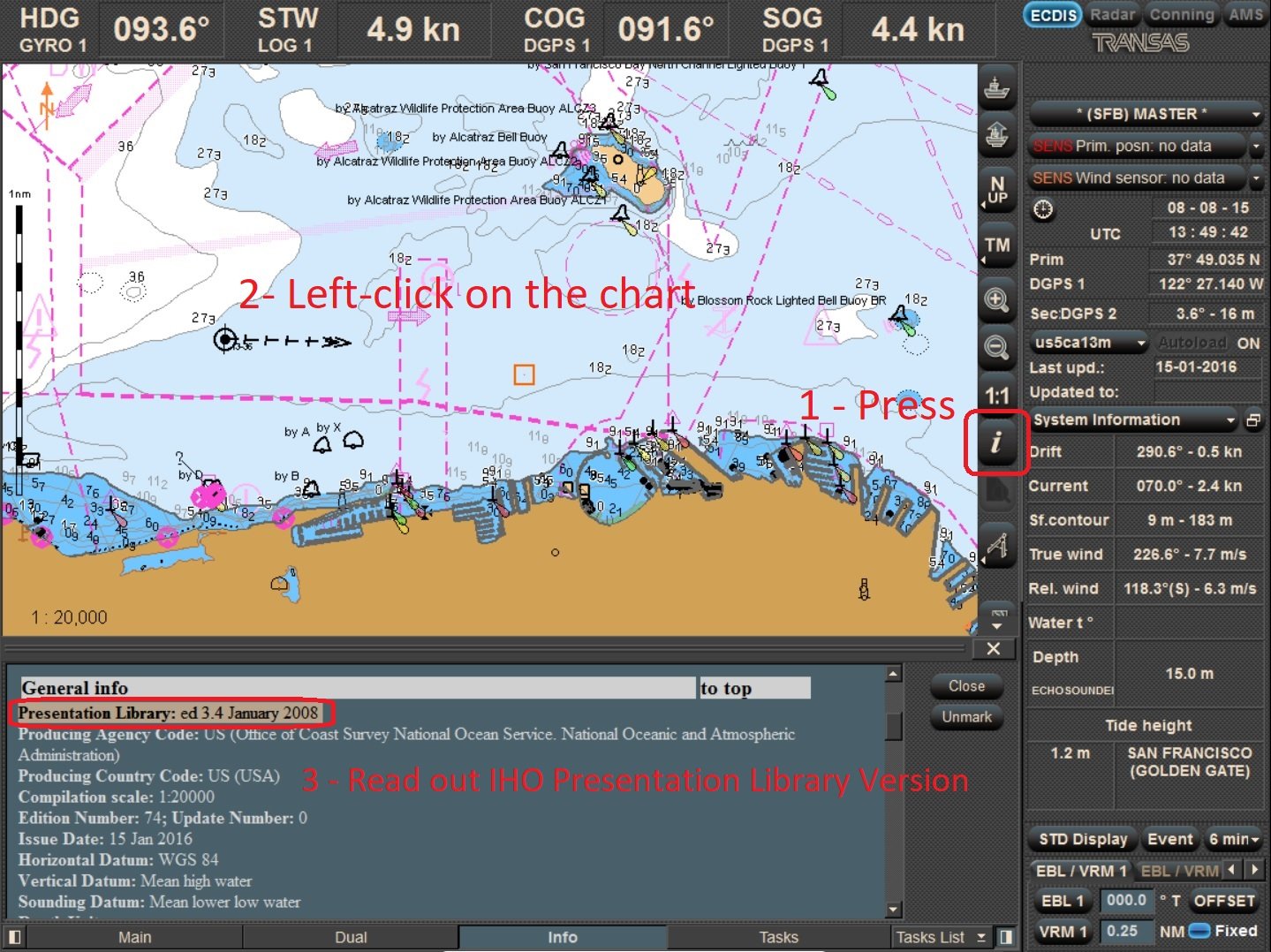
As you can see, this ECDIS still runs with the old Presentation Library ed 3.4 from 2008.
Another tricky moment is that not every ECDIS clearly shows ECDIS chart 1 as it is. ECDIS chart 1 is split in several cells with names starting from “AA”. So, if one clicks “Task List” -> “Charts” he will be able to see charts “aa5cab1” and “aa5cab2”, which are supposed to be checked as per IHO recommendations. As mentioned above, it is not possible to view the new symbols, as the ECDIS software has not been updated to use the S-52 Presentation Library Edition 4.0
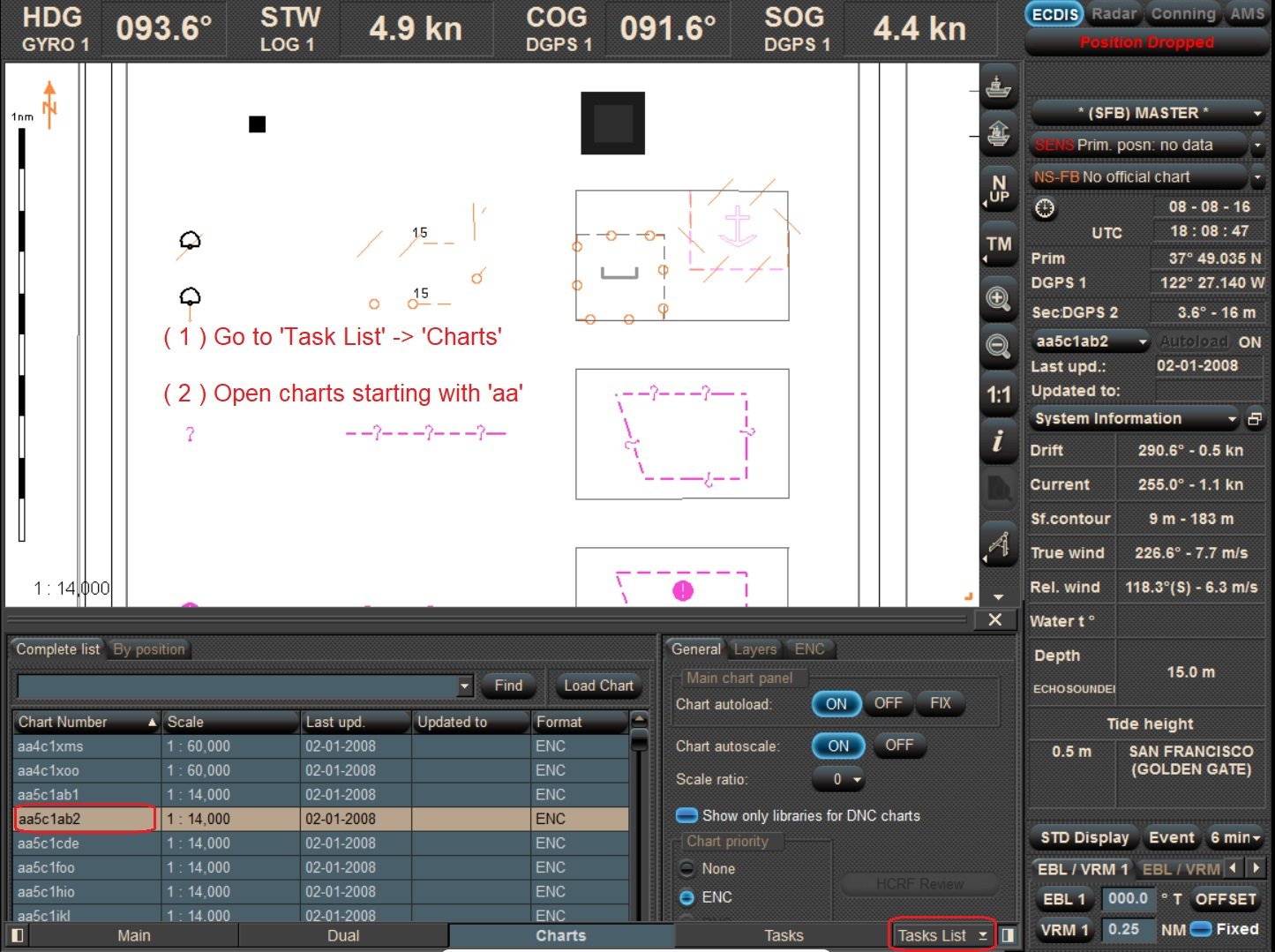
IHO Presentation Library check on Simrad Maris 900
This can also be done in three steps:
( 1 ) TrackBall RightClick anywhere on the chart
( 2 ) Click “Properties” on the context menu
( 3 ) Click “More” in the chart information field
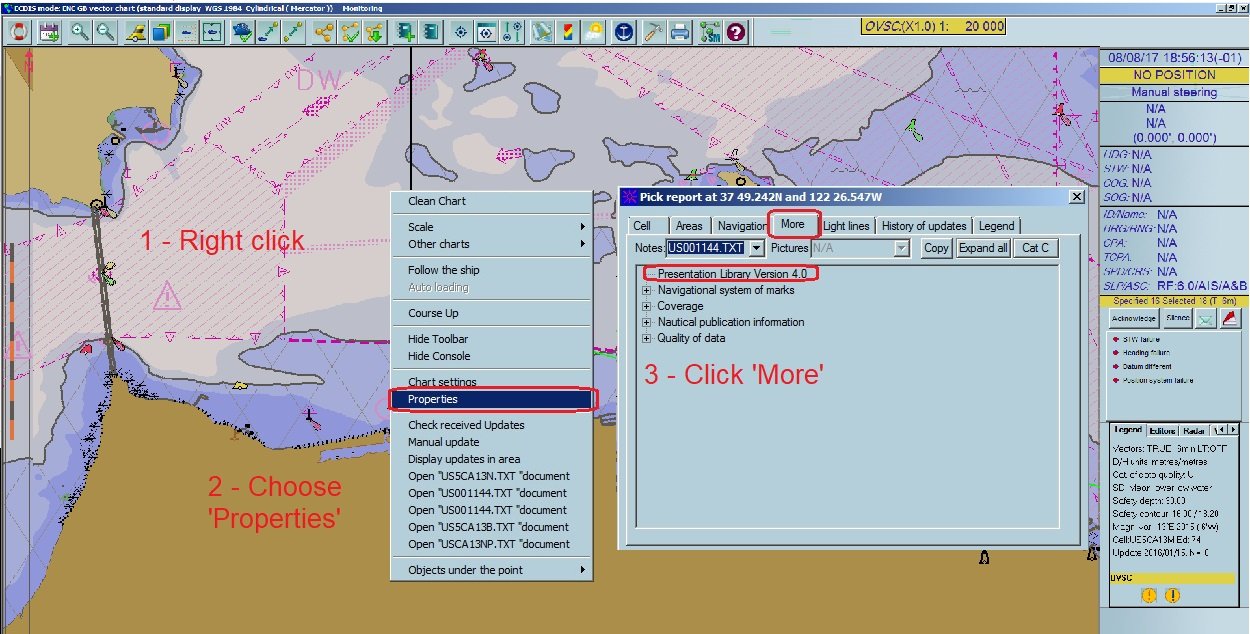
This ECDIS already runs with the new Presentation Library ed 4.0 from 2014 . And if you access the Charts Management utility, you will be able to find ECDIS Chart 1 and the same notation for its cells. Checking cells “aa5cab1” and “aa5cab2” will give an exact match with an example given by IHO.
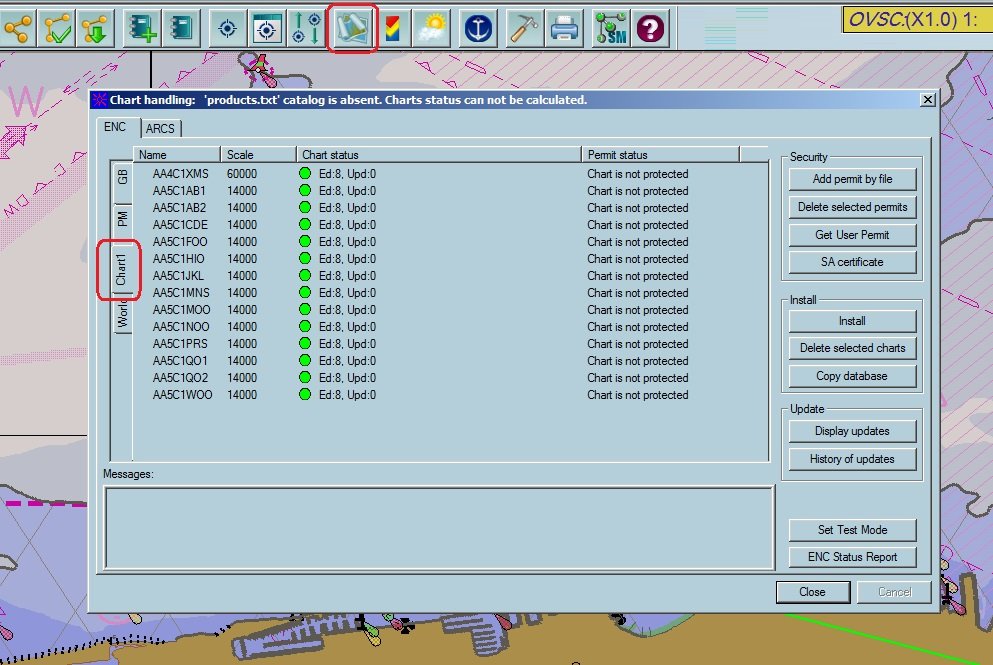
I do hope that this information helped to clarify some concerns regarding ECDIS Presentation Library and corresponding checks and I wish you fair winds, following seas and no deficiencies!
Our courses
Seafarers' rights.

Ship's Cook Refresher Course
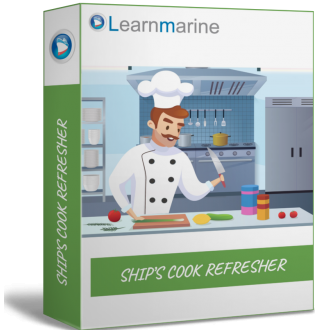
High Voltage Equipment
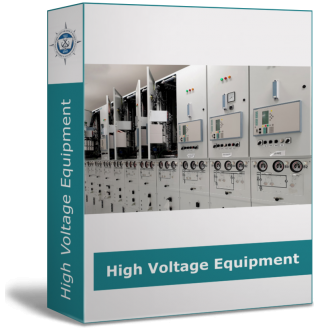
Time Management
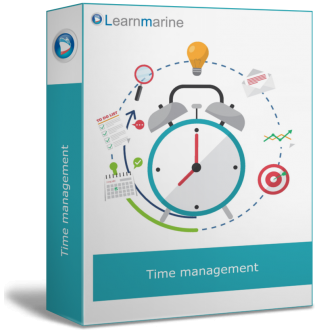
Related articles
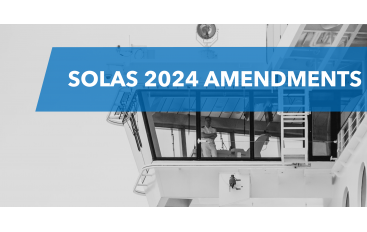
INMARSAT is not the only GMDSS satellite service! New amendments to SOLAS Chapter IV on GMDSS
The International Maritime Organization (IMO) has revised the SOLAS Chapter IV requirements for the Global Maritime Distress and Safety System (GMDSS) to reflect advancements in technology and to...

E-mail etiquette in maritime industry: best practices
Email is one of the most common and important forms of communication in the modern world, especially for businesses that operate across borders and oceans. However, email etiquette can vary depending...
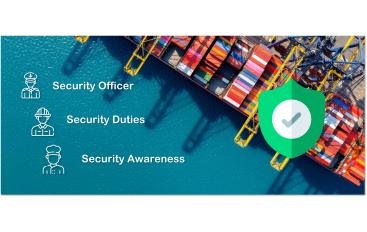
STCW Maritime Security Training - which one do you need?
Maritime security is a vital aspect of the shipping industry, as it protects the lives and property of seafarers, passengers, cargo, and port facilities from various threats and risks. To ensure...
Welcome back
Create an account.
Follow us to stay up to date

- Loss Prevention
- Maritime Health

Gard: Persistent theft threats at Callao port despite 2024 lull

IMO calls for immediate end to Red Sea attacks

Operation ATALANTA frees hijacked vessel BASILISK
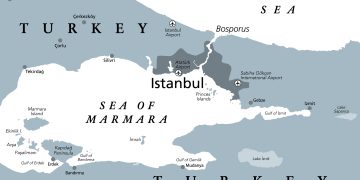
Shadow tanker experiences engine failure in Dardanelles
- Intellectual
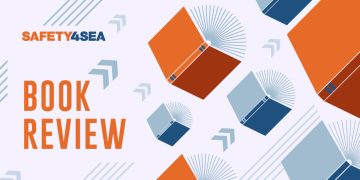
Book Review: Who moved my cheese?

Book Review: A cross-disciplinary view of sustainable shipping

Stay SEAFiT: Providing Psychological First Aid

Positive Reflection: How to train yourself to reframe negative thoughts
- Green Shipping
- Ship Recycling
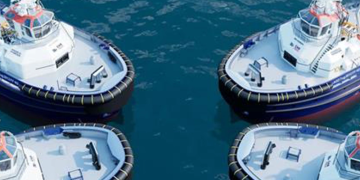
Lloyd’s Register approves CMB.TECH hydrogen solution for tugs


Flex LNG alerts of potential Russian LNG dark fleet
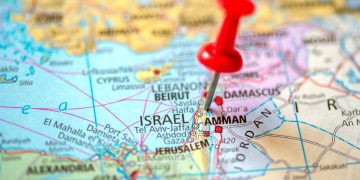
Israel issues new measure to prevent sewage pollution

Two parties partner to pioneer liquefied hydrogen carrier technologies
- Connectivity
- Cyber Security
- E-navigation
- Energy Efficiency
- Maritime Software
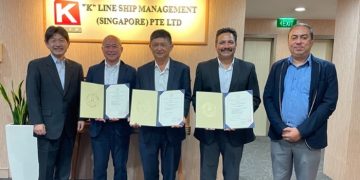
K Line crew management software gets nod from ClassNK

Blue Visby trials show significant emissions reduction

Marlink expands support presence with six new customer centers
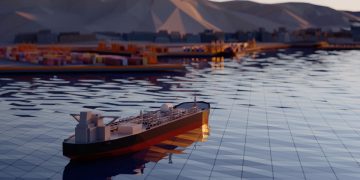
Kongsberg Digital first to receive IACS UR E27 approval

ABS Port State Control Q1 Report 2024

Paris MoU 2023 CIC on Fire Safety

Royal Navy lieutenant fined for near-miss incident with tanker

UK imposes sanctions on Russia and North Korea for arms trade violations
- Diversity in shipping
- Maritime Knowledge
- Sustainability

ESG Climate Survey: Shipping is now featuring Social and Governance topics high on the agenda

Sea-Intelligence: Transit time up 39% on Asia-MED
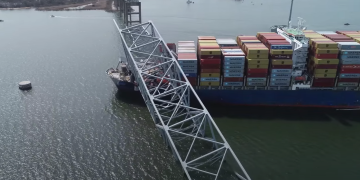
CSX to resume normal coal operations at port of Baltimore

Maritime charities endorse DSG’s seafarer welfare benchmarking initiative

Be prepared for the next wave: FuelEU Maritime explained

CHIRP: Create a culture of incident sharing in maritime to reduce safety risks
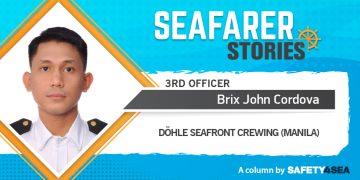
Seafarer Stories: Brix John Cordova, Third Officer
Trending tags.
- Book Review
- Career Paths
- Human Performance
- Industry Voices
- Maritime History
- Regulatory Update
- Seafarers Stories
- Training & Development
- Wellness Corner
- Wellness Tips

New ECDIS Data Presentation and Performance Check in ships
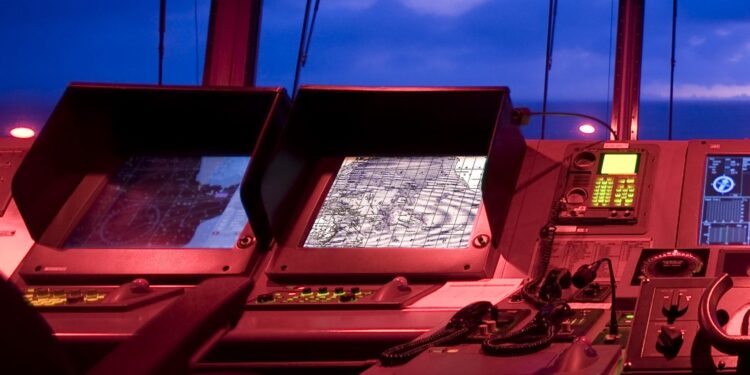
The International Hydrographic Organization (IHO) issued a bulletin concerning its new ECDIS Data Presentation and Performance Check for ships. IHO says that the checks should be run at least once after installing an ECDIS. A re-run is recommended only after a software update, system upgrade or change of equipment. The results should be reported to the IHO if and only if anomalies are found.
Furthermore, IHO clarifies that the following checks are not intended for, and are not suitable to be used as a Port State Inspection / Carriage compliance test for ECDIS.
ECDIS operating with Edition 3.4 of the IHO Presentation Library (Annex A to S-52)
Note: The associated datasets will be removed when the planned retirement date of Edition 3.4 of the IHO Presentation Library is reached. The retirement date is currently set at 31 August 2017.
Related News
Amsa trusts in digitalization for safer and more efficient shipping, lessons learned: cpa alarms are a welcome tool.
The instructions for loading the data, carrying out the checks and submitting the results to the IHO can be downloaded here .
Background information:
- Letter to Ships’ Masters, Owners and Operators concerning the important ENC/ECDIS Data Presentation and Performance Check in Ships,
- Background Paper – ENC/ECDIS Data Presentation and Performance Check for Ships.
IHO suggests at those who find any difficulty to submit their results using:
- the Online Reporting Form or;
- the Standalone PDF Reporting Form
ECDIS operating with Edition 4.0 of the IHO Presentation Library (Annex A to S-52)
Changes introduced in Edition 4.0 of the IHO Presentation Library invalidate the tests contained in the ECDIS Data Presentation and Performance Checks, which were specifically designed and developed for ECDIS, using previous editions of the Presentation Library.
An ECDIS type approval certificate showing conformance with tests in edition 4.0 of IEC 61174 demonstrates that the ECDIS does not have any of the identified ENC display anomalies.
The subsequent guidance here describes the method by which mariners may check the ECDIS displays for the new ENC symbols contained in Edition 4.0 of the Presentation Library.
IHO urges anyone who detects any anomaly in the display to contact the provider of the ECDIS and inform the IHO at info(at)iho.int.
Source: IHO

Saipem, Siemens to collaborate on subsea applications
Biometric id cards now compulsory for ports.

RINA awards AiP to Blue Wasp Marine for software for wind-assisted ship

Book Review: A practical guide to integrated navigation and bridge systems

The importance of ECDIS in improving situation awareness for safe navigation
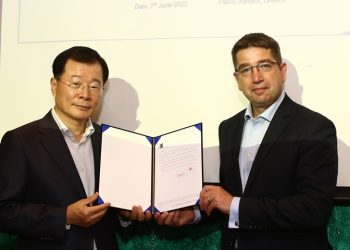
Samsung’s autonomous ship software receives LR approval
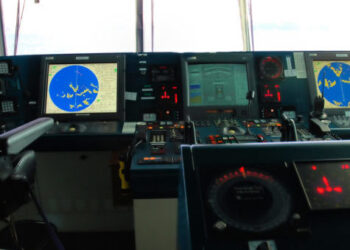
IMO Sub-Committee updates ECDIS performance standards

IMO Navigation, Communications and Search and Rescue Sub-Committee: What’s on the agenda?
Leave a reply cancel reply.
Your email address will not be published. Required fields are marked *
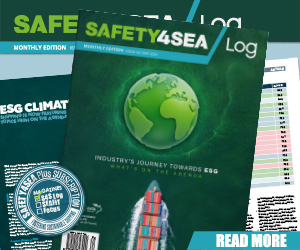
Explore more

- SAFETY4SEA Events
- SAFETY4SEA Plus Subscription
Useful Links
- Editorial Policies
- Advertising
- Content Marketing
© 2021 SAFETY4SEA
- PSC Case Studies
- Tip of the day
- Training & Development

IMAGES
VIDEO
COMMENTS
All ECDIS must have a function to display the edition number of the IHO Presentation Library that is in use within the ECDIS. The new IHO ECDIS Presentation Library edition 4.0 clause 19.1 states: 'The edition number of the PresLib installed must be available to the Mariner on request'. This requirement is tested for in the standard IEC ...
For a graphical way to establish the ECDIS is correctly displaying the new symbols introduced in IHO S-52 Presentation Library edition 4.0 the Mariner can check ECDIS Chart 1. ECDIS chart 1 is a legend of the entire set of symbols that may be used within an ENC, it is installed on all type approved ECDIS systems.
-New requirement that, "ECDIS must provide a function to turn off the SCAMIN attribute to display all objects in the chart display . S-52 PresLib 4.0 Changes •10.5.7 Shallow water indicator - Availability of symbol changed from optional to mandatory
IHO ECDIS Presentation Library iii S-52 Annex A, Addendum to Part I December 2020 Edition 4.0(.3) Changes Made to Symbol Discriptions in Edition 4.0.0 Thirty-eight symbols have been identified that are depicted with the incorrect line weight. Conspicuous objects are to have a line weight of 0.6 mm and non-conspicuous objects a line
authoritative statement of the presentation library contents. The tables below detail the changes made to create S-52 Presentation Library Edition 4.0.0. New Mandatory ECDIS Requirements S-52 Ed. 4.0.0 Clause Description Justification 10.3.4.4 Ability to turn Isolated Dangers in Shallow Water on/off. Existing feature in e3.4 changed from
ECDIS Chart 1 and IHO Presentation Library edition 4.0 ECDIS users can check that their systems are capable of displaying the new symbols introduced in the IHO S-52 Presentation Library edition 4.0 by opening the ECDIS Chart 1 datasets. ECDIS Chart 1, which includes a legend of symbols used in ENC's, should be installed on all type approved ECDIS.
Specifications for Chart Content and Display Aspects of ECDIS: S-52 (Annex A) Edition 4.0.(3), October 2014 (with Clarifications up to December 2020) See Note 2. IHO ECDIS Presentation Library: S-64 Edition 3.0.(3), December 2020. See Note 2. IHO Test Data Sets for ECDIS: S-61 Edition 1.0, January 1999. See Note 3
Last update: mai 11, 2014. Draft edition 6.1.0 of S-52 "Specifications for Chart Content and Display Aspects of ECDIS". Edition 6.1.0 (Clean draft) Edition 6.1.0 (Redline) Draft edition 4.0.0 of S-52 Annex A "IHO ECDIS Presentation Library". Part I - Users' Manual (Clean draft) Part I (Redline) Appendices to Part I (.zip) Addendum to Part I ...
1 ECDIS and the IHO Presentation Library Edition Number All ECDIS must have a function to display the edition number of the IHO Presentation Library that is in use within the ECDIS. The new IHO ECDIS Presentation Library edition 4.0 clause 19.1 states 'The edition number of the PresLib installed must be available to the Mariner on request'.
ECDIS Chart 1, which will be issued with the Presentation Library as a graphic file will be also available in the pseudo-S57 format for edition 3.4 making use of the the SYMINS attribute of the generic object NEWOBJ introduced by the Supplement No.1 to S-57, Edition 3.1.1In keeping with previous versions of the presentation library the contents
Viewing ECDIS Chart 1, "Information about chart display (A, B)" within the ECDIS will only display the new symbols if the IHO Presentation Library edition 4.0 is installed.
Figure 2 - Correct display of objects in Presentation Library edition 3.4 5. The "New object" symbol (4) should appear as a square and include the words "Presentation Library 3.4" 6. Report your results by completing question 1 on the reporting form. What should you do if your ECDIS does not show the symbols as they are shown in
International Hydrographic Organization
To check that the ECDIS is correctly displaying the new symbols, the Mariner can check ECDIS Chart 1. ECDIS Chart 1 is a legend of the entire set of symbols that may be used within an ENC. It is installed on all type approved ECDIS systems. Only ECDIS updated to IHO Presentation Library edition 4.0 will be able to show the new ENC symbols.
Maritime News. ECDIS operating with Edition 4.0 of the IHO Presentation Library. Changes introduced in Edition 4.0 of the IHO Presentation Library invalidate the tests contained in the ECDIS Data Presentation and Performance Checks which were specifically designed and developed for ECDIS using previous editions of the Presentation Library.
ECDIS be updated to IHO S-63 Data Protection Scheme, Edition 1.2. The impact of this is that: Older ECDIS not yet updated to Presentation Library Edition 4.0 will not benefit from the significant changes introduced in Presentation Library Edition 4.0 and may not meet the chart carriage requirements as set out in SOLAS regulation V/19.2.1.4.
For a graphical way to establish the ECDIS is correctly displaying the new symbols introduced in IHO S-52 Presentation Library edition, 4.0 the Mariner can check ECDIS Chart 1. ECDIS chart 1 is a legend of the entire set of symbols that may be used within an ENC. It is installed on all type approved ECDIS systems.
A channel for merchant Navy examination (oral and written) / the certificate of competency (COC) for mariners or seafarers Follow me on Insta https://www.ins...
Annex A to S-52 (IHO ECDIS Presentation Library) Edition 4.0(.3) - October 2014 (With Clarifications up to December 2020) How to obtain it? The full Annex A to S-52 (IHO ECDIS Presentation Library) Edition 4.0(.3) - October 2014 (with Clarifications up to December 2020) is available from the IHO Secretariat at a price of
All ECDIS must have a function to display the edition number of the IHO Presentation Library that is in use within the ECDIS. The new IHO ECDIS Presentation Library edition 4.0 clause 19.1 states: 'The edition number of the PresLib installed must be available to the Mariner on request'. This requirement is tested for in the standard IEC ...
IHO ECDIS Presentation Library S-52 PresLib 4.0(.2) ENC Symbol Catalogue July 2017 Changes Made to Symbol Discriptions in Edition 4.0.0 Thirty-eight symbols have been identified that are depicted with the incorrect line weight. Conspicuous objects are to have a line weight of 0.6 mm and non-conspicuous objects a line weight of 0.3 mm.
ECDIS operating with Edition 3.4 of the IHO Presentation Library (Annex A to S-52) Note: The associated datasets will be removed when the planned retirement date of Edition 3.4 of the IHO Presentation Library is reached. The retirement date is currently set at 31 August 2017.
The version of S-52 published in 2008 focused on adapting Appendix 2, Annex A to the revised IMO ECDIS Performance Standards and the introduction of new symbology for Particular Sensitive Sea Areas, Archipelagic Sea Lanes and generic objects which may be used for future cartographic requirements initiated by the IMO.